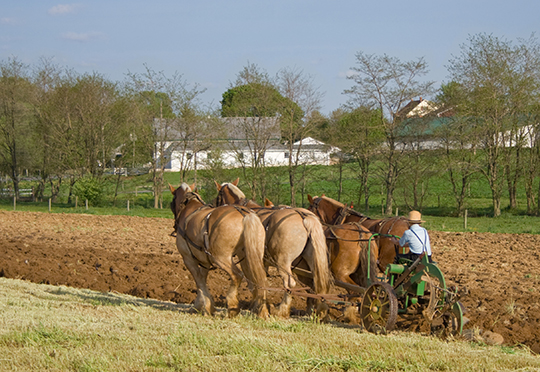
The Anabaptist community, often meaning the Amish or Mennonites, can be difficult to understand without some form of prior knowledge, so Steven Nolt, professor of history and senior scholar from the Young Center for Anabaptist and Pietist Studies at Elizabethtown College, has given aid to those looking to better communicate with members of these groups. This past summer, he worked with the U.S. Department of Agriculture (USDA) in Indiana to help them better comprehend the uniqueness of the Amish communities in the Hoosier State.
One goal of the training days was to “communicate the diversity of the Amish population—not all Amish communities are the same—to break down some of the stereotypes and generalizations,” said Nolt.
The Young Center traditionally hosts lectures every three years about Anabaptist peoples, sharing information about their practices, beliefs and challenges. Among those in attendance at one of the conferences were employees of the USDA, who found the information helpful as they interact with members of their community. In 2017, the Young Center was contacted by the USDA in Indiana asking if someone could come out and give more information on the Amish communities to improve cultural competency.
There’s a committee within every USDA state office that looks to improve communication with … federally recognized groups.”
Cultural competency is a set of behaviors, policies and attitudes that allows cultures to more easily work together. “There’s a committee within every USDA state office that looks to improve communication with … federally recognized groups—female farmers, African American farmers and Native American farmers,” said Nolt. The USDA and the Amish often cross paths.
In Indiana, alone, there are 23 Amish communities, and no two are exactly alike. Fundamentally, they are similar, but details begin to differ in regard to how they carry out their daily lives. Each church has its own rules and guidelines. Amish settlements in the north, for instance, have moved away from farming—turning to factory work instead. Meanwhile, those who have remained in agriculture have shifted to different varieties of crops. “Those who have stayed in farming are more apt to go into more niche agriculture like organic or with Community Supported Agriculture, grass-fed dairy,” Nolt said.
These changes bring unique interaction, and this is where Nolt comes in.
The information sessions he led were spread across two days—one in Rochester, Indiana, the other in Oden—so the largest number of people from the Indiana USDA could attend. Participants could be part of the information sessions whether or not they interacted with the Amish. Each seminar covered basic Amish practices, dispelled false stereotypes and shared the viewpoints the Amish have about the government.
“I started with an overview, and then I talked about the structure of Amish society, leadership in Amish communities … the economic shift away from farming into other sorts of occupations,” Nolt said.
Those in attendance could walk away with more understanding of Amish and Mennonite cultures, making it less likely they will offend or misunderstand those in the communities in which they work. By being more empathetic to the Anabaptist ladder of decision making, for instance, there is hope to have more buy-in from the groups concerning agricultural programs such as soil conservation.

